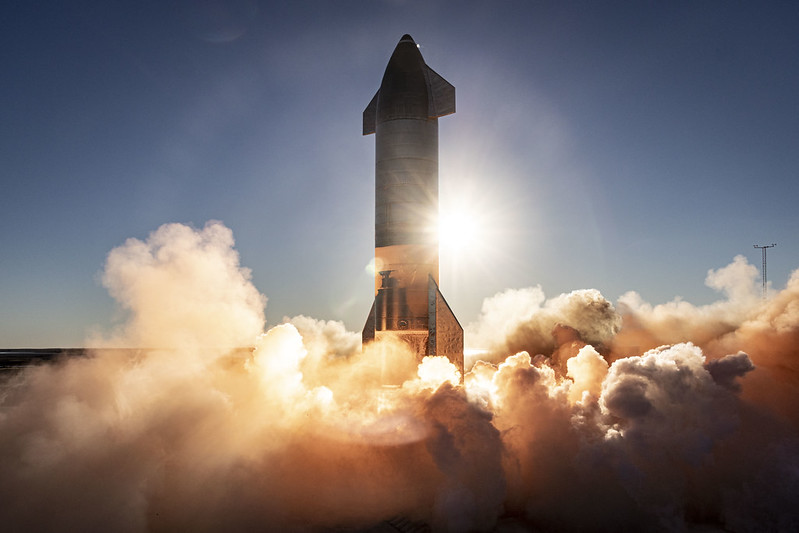
SpaceX tests Starship, gains clients
SpaceX is popping rockets into orbit faster than any aerospace group – past or present, public or private – ever has. And CEO Elon Musk has set his sights on 100 or more flights in 2023. The company is moving quickly to get its Starship heavy-lift vehicle off the ground again. This time it will be for a full orbital test. New clients are lining up to put their payloads aboard the trusty Falcon 9, the company’s workhorse.
They’ve got the better mousetrap
A rideshare launch of five satellites for Iridium Communications’ NEXT program is the most recent buy-in. The satellites flying in the Iridium-9 mission are spares for the company’s global broadband satellite constellation. According to a September 8, 2022, press release from Iridium, SpaceX has already flown eight Iridium missions in the last five years. The next liftoff will come next year:
Known as Iridium-9, the launch is planned to take place at Vandenberg Space Force Base in mid-2023. Earlier this year, Iridium celebrated the 25th anniversary of the first launch in Iridium’s history, which also took place from Vandenberg on May 5, 1997. That first ever launch also carried five Iridium satellites to orbit on a Delta II rocket.
Iridium CEO Matt Desch praised SpaceX’s performance while explaining why the company is putting most of its spare satellites up now:
Our constellation is incredibly healthy; however, the spare satellites have no utility to us on the ground. We built extra satellites as an insurance policy, and with SpaceX’s stellar track record, we look forward to another successful launch, which will position us even better to replicate the longevity of our first constellation.
ESA says do svidaniya to Roscosmos launches
SpaceX is likely to see a long waiting list for clients eager to put their satellites into the hands of the most reliable ride going. This is especially true now that Russia appears to be almost entirely out of the international aerospace business.
During an interview last month with Ars Technica, European Space Agency Director General Josef Aschbacher made it clear he and other representatives of ESA are horrified by Russia’s invasion of the Ukraine in February of 2022. The distaste is so intense the Europeans have ended all business with Roscosmos. Roscosmos is the Russian space agency that had been a leading launch provider for crewed and uncrewed trips to the ISS.
The decision to sever ties is a purely moral one, he said:
I’m really disgusted by the invasion of Ukraine. We see it every single day. What is happening there is not meeting our European values, and we cannot work with a partner who is completely trampling on those values.
While the ESA works to get its Ariane 6 flightworthy, it had a handful of launches booked through Russia. They canceled those, he told Ars Technica, leaving a gap SpaceX may help fill:
We had five launches foreseen on Soyuz, and they have been scrapped. Right now I’m in contact with different operators. SpaceX is one of them, but also Japan, India, and basically we want to see whether in principle, our satellites can be launched on their rockets.
Aiming for new launch record in 2023
The Falcon 9 launch of another set of Starlink communications satellites just this Monday (September 19, 2022) marked the 40th time SpaceX has launched its fully reusable boosters. That is a new annual launch record for the company. Next year, CEO Musk says they plan to launch more than twice that many vehicles. The announcement, as is often the case, came in the form of a casual tweet. It was a response to a comment about the company setting a pace of one launch every 6.2 days in 2022.
Yeah, aiming for up to 100 flights next year
— Elon Musk (@elonmusk) August 31, 2022
Launches on SpaceX’s Starship
Some of those launches may head to space on board the company’s super-heavy lift vehicle, the Starship. Starship Booster 7, which will be used when the vehicle finally gets a full orbital test flight, reached a new milestone this week. A seven-engine test fire came off without a hitch. During a previous engine test, unburnt fuel ignited under the booster, causing a spectacular but mostly harmless explosion.
There was no such anomaly this time, and Musk shared video of the Tuesday (September 19, 2022) test:
7 engine static fire pic.twitter.com/sOm8Jx8rJq
— Elon Musk (@elonmusk) September 19, 2022
The powerful Raptor 2 engines raised a billowing cloud of yellow Texas dust that obscured the Starship. That sight’s become iconic at the Boca Chica facility.
Great for clearing dust!
— Elon Musk (@elonmusk) September 19, 2022
Bottom line: SpaceX plans to make 100 or more trips to space in 2023, including new flights for old clients and former clients of the shunned Russian space agency.











